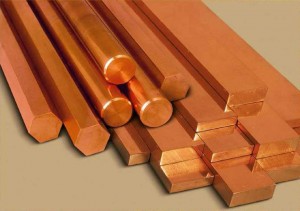 Copper rose on Monday as upbeat trade and inflation data from its top consumer China added to evidence that the worlds second biggest economy is rebounding after two quarters of slowing growth.
Copper rose on Monday as upbeat trade and inflation data from its top consumer China added to evidence that the worlds second biggest economy is rebounding after two quarters of slowing growth.
On the Comex division of the New York Mercantile Exchange, copper for December delivery rose by 0.67% to $3.285 per pound at 8:40 GMT. Prices ranged between days high and low of $3.293 and $3.259 per pound respectively. The industrial metal rose by 0.4% on Friday and settled the week 0.7% higher after plunging 3.7% in the preceding two five-day periods.
The red metal extended last weeks advance as data by the General Administration of Customs showed China’s total exports rose by 7.2% last month, exceeding analysts’ expectations for a 5.5% surge. Imports increased by 7%, below projections, but still above July’s 5.1% rise.
Meanwhile, the National Bureau of Statistics China reported that the country’s consumer inflation rose by 2.6% and remained below the government’s target, leaving extra room for mini financial stimulus, which is supportive for gold demand as the metal is used as a hedge against inflation. China’s producer-price index fell by 1.6% in August after dropping 2.3% in July, marking the smallest decline in six months.
Pang Juan, an analyst with Jinrui Futures Co., said for Bloomberg: “The market got some confidence from the August trade data.” He said that Japan winning the right to host the 2020 Olympic games was also positive for metals demand.
Last week, copper drew support by upbeat manufacturing data from the U.S., Europe and China. The Institute for Supply Management reported on Tuesday that U.S. factory activity grew at the fastest pace in 26 months. The institute’s ISM Manufacturing index surged to 55.7 in August from 55.4 in July, confounding analysts’ expectations for a drop to 54.0. This was the highest reading since June 2011.
The Chinese National Bureau of Statistics reported that the country’s manufacturing Purchasing Managers’ Index surpassed forecasts for a jump to 50.6 according to a Reuters poll and rose to 51.0 in August, the highest since last April, from 50.3 in July.
Last Monday, according to a separate private survey by HSBC and Markit Economics, the HSBC Purchasing Managers’ Index surged to 50.1 in August, marking a major improvement from July’s 11-month low of 47.7 in July and ending a three-month declining cycle. Chinese manufacturers signaled a slight expansion in growth that was based on improving market conditions.
Meanwhile, the general Euro zone’s Final Manufacturing PMI surpassed analysts’ expectations for remaining unchanged at 51.3 and rose to 51.4, indicating the the single currency bloc’s economic activity is consistently improving.





